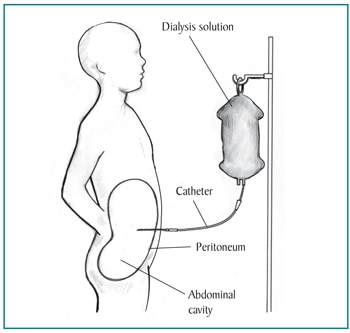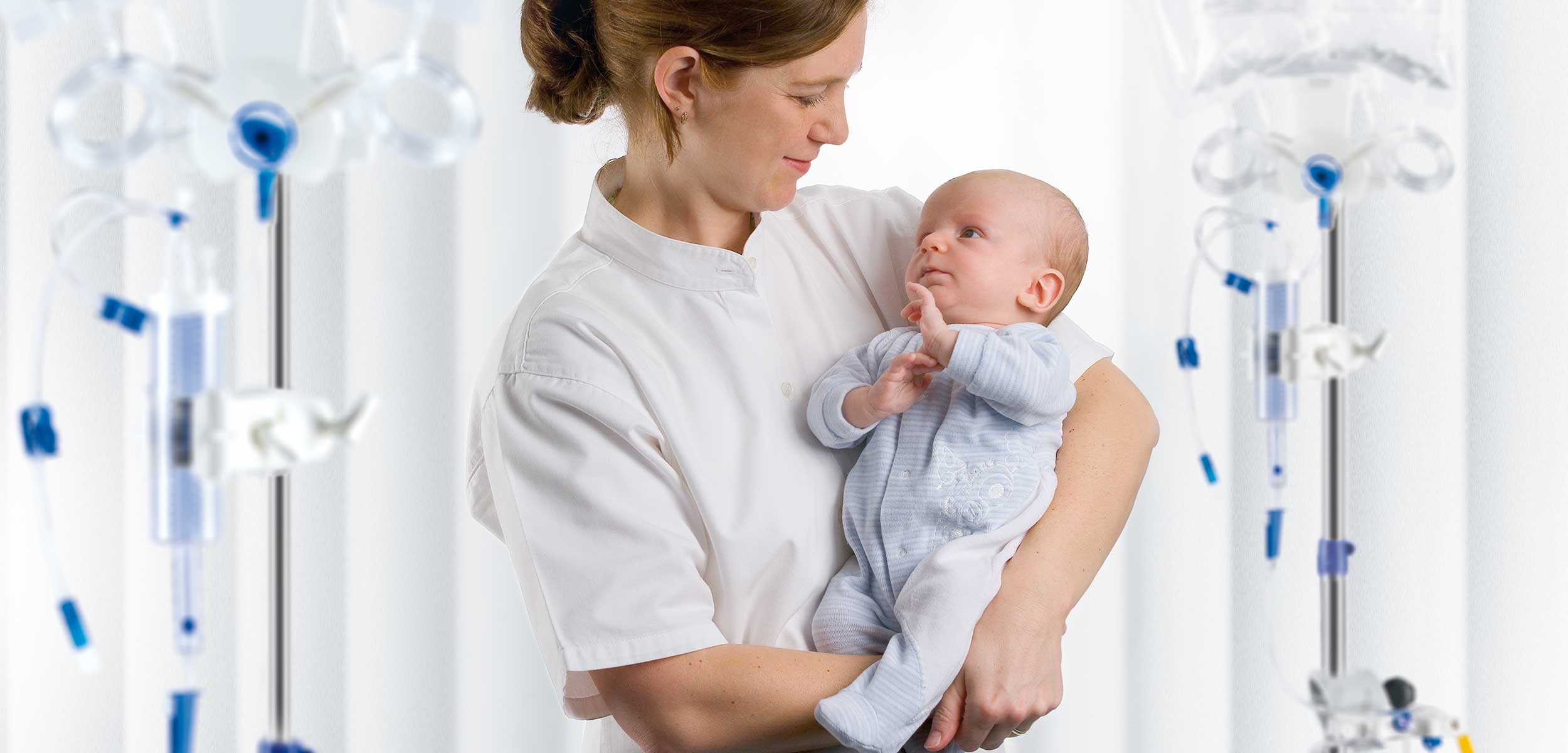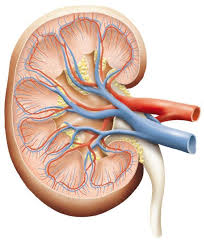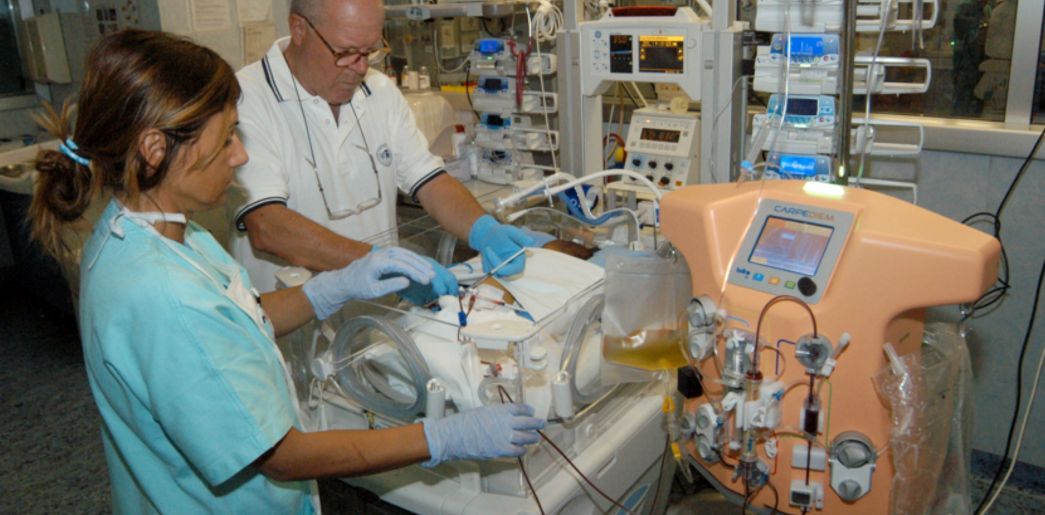infant peritoneal dialysis
The Argyle pediatric peritoneal dialysis catheter line is designed to enable patient customization to support long-term access preservation and patency. Dialysis-access-associated infections specifically peritonitis are leading causes of hospitalization and death among infants receiving PD.

Peritoneal Dialysis With Cook Pigtail Catheter In An Extreme Low Birth Weight Baby With Anuric Renal Failure
Most infants and young children who receive PD are treated with automated PD while asleep unless this form of dialysis is precluded by cost.

. We analysed patient records from all children consecutively treated with CPD between 1995 and 2007 in Italy. It is easier to perform less invasive than extracorporeal treatments and does not require anticoagulation. Problems include higher mortality rates and an inferior long-term outcome compared with that in older children.
During the past 35 years we have treated 22 children with either acute less than 30 days or chronic greater than 30 days peritoneal dialysis PD at Henrietta Egleston Hospital for Children. Doctors place the catheter while a child is asleep under general anesthesia. According to the North American Pediatric Renal Trials and Collaborative Studies NAPRTCS database infants with ESRD are more likely to be initiated on PD 98 of neonates than on hemodialysis HD 3.
In this review we discuss the practice of peritoneal dialysis in infants including the unique ethical and technical considerations facing pediatric nephrologists and caregivers. Peritoneal dialysis PD in infants represents one of the greatest challenges for pediatric nephrologists. Within 2 weeks the surgical spot is healed and kids can start peritoneal dialysis treatments.
Peritoneal dialysis PD is a type of dialysis which uses the peritoneum in a persons abdomen as the membrane through which fluid and dissolved substances are exchanged with the blood. After 12 months of follow-up all children were on automated cycler PD APD regimens either without daytime dwell nightly intermittent PD NIPD 63 or with daytime dwell continuous cycling PD CCPD 37. Accordingly the recommended maintenance exchange fill volume for patients below age 2 years is generally 600800 mLm 2 24 to maintain the intraperitoneal pressure between 8 and 10 cm of water 38.
Neonatal Peritoneal Dialysis PD and Setting up of PD-Paed system Aim The aim of this guideline is to aid nursing staff in the setting up of the PD- Paed system for peritoneal dialysis specifically for Neonatal Intensive Care. Ten infants and children ranging in age from 3 days to 34 months have been treated with peritoneal dialysis. Occasional reports of intermittent peritoneal dialysis in pediatric patients emerged in the 1970s 23 but hemodialysis remained the modality of choice.
Over recent years positive outcome data described by several multicenter experiences and registry studies have increased the amount of information available to help determine whether to initiate a dialysis program in this high-risk patient population. Median age at the start of CPD was 69 months weight was 61 kg and length 636 cm. Typically initial dialysis exchange volumes in an infant should be 300400 mLm 2 and are increased as clinically warranted and tolerated.
The need for maintenance dialysis for infants is rare but peritoneal dialysis has been the modality of choice in cases of end-stage renal failure for technical reasons. Some may get the treatment earlier if needed. End-stage renal disease ESRD utilized peritoneal dialysis as a renal replacement therapy RRT.
Advantages of automated PD include its ability to provide the small frequent exchanges that may be required of these patients to ensure sufficient ultrafiltration. Continuous ambulatory peritoneal dialysis PD was applied as initial treatment in 30 of infants when the fill volume was. Videos Features Benefits.
The use of clinical practice improvement methods helps prevent infection and when they occur initia- tion of prompt and appropriate treatment and thus should be included in pediatric PD programs. Growth data analysis was performed only in infants with complete auxological parameters at 0 6 and 12 months of follow-up. Pediatric renal failure patients can be restored to health with peritoneal dialysis more easily more comfortably and more safely than with hemodialysis.
The Adult Adolescent and Pediatric Catheters have an internal diameter ID that is 35 larger than competitive catheters resulting in up to 30 higher flow rates. CCPD or automated peritoneal dialysis APD requires the patient to be connected to a machine cycler which controls the exchange of the dialysate fluid over a period of 8-12 hours. Over recent years positive outcome data described by several multicenter experiences and registry studies have increased the amount of information available to help determine whether to initiate a dialysis program in this high-risk patient population.
Infant catheters are available in one and two cuff configurations. All 10 were anuric on severely oliguric. Peritoneal dialysis is the renal replacement modality of choice for this age group and serves as an essential bridge until successful renal transplantation can occur.
Before starting peritoneal dialysis kids need a soft flexible tube a catheter placed into their belly. Given that infants on dialysis have been shown to demonstrate increases in weight and height as a result of enhanced nutritional management based on data collected by the International Pediatric Peritoneal Dialysis Network IPPN and the NAPRTCS a suboptimal nutritional status associated with fluid overload and poor growth of an infant with ESKD are often the primary. Argyle Infant Swan Neck Curl Cath Catheter 2 Cuffs 389 cm.
This may be easier for the familycaregivers because the child receives dialysis in the comfort of his or her home while asleep. Each catheter kit contains a unique stenciling system for improved placement accuracy. Three had salicylate intoxication and three had boric acid poisoning as additional complications.
The timing of starting and stopping. Peritoneal dialysis PD in infants represents one of the greatest challenges for pediatric nephrologists. The emergence of continuous ambulatory peritoneal dialysis CAPD and continuous cycling.
Three of the 10 children including the only patient with irreversible renal disease died. Peritoneal dialysis PD is in general the preferred treatment modality for pediatric patients to bridge the time until transplantation 1. Over the years acute peritoneal dialysis APD has been successfully adopted for critically ill neonates since it has a few key advantages over hemodialysis such as significantly lower cost relatively easier application and simpler technique 4.
It is used to remove excess fluid correct electrolyte problems and. Chronic peritoneal dialysis PD is safe and the preferred dialysis modality for management of ESRD as a bridge to renal transplantation in children 1 2. Argyle Pediatric Swan Neck Curl Cath Catheter 2 Cuffs Left 42 cm.

Pdf Peritoneal Dialysis In Extremely Low Birth Weight Baby Using Chronic Pd Catheter Semantic Scholar

Peritoneal Dialysis Merit S Committment To Dialysis Access

Peritoneal Dialysis Johns Hopkins All Children S Hospital
Infant Kidney Keyword Search Science Photo Library

Treatment For Kidney Failure In Children Niddk

Set Up For Pd Treatment Of An Infant Who Needed A Dwell Volume Of Less Download Scientific Diagram

Pediatric Peritoneal Dialysis Fresenius Medical Care

Pdf Application Of Peritoneal Dialysis In An Infant With Fungal Sepsis Induced Acute Kidney Injury Semantic Scholar

Services Best Pediatric Nephrologist In Kolkata Dr Biswanath Basu

Jonathan 6 Undergoes Hemodialysis In The Infant Nephrology Ward Of The Roosevelt Hospital In Guatemala City October 30 2012 According To Hospital Authorities The Infant Nephrology Ward Of The Roosevelt Hospital Which

Children S Organ Transplant Association Cota For Team Hudson S Blog Hudsons Major Events Timeline
Sowmya Children S Hospital Other Specialities

Chronic Peritoneal Dialysis In Children Paediatrics And Child Health

Peritoneal Dialysis By Sharon Su For Openpediatrics Youtube

Peritoneal Dialysis Stock Image C035 2905 Science Photo Library




Comments
Post a Comment